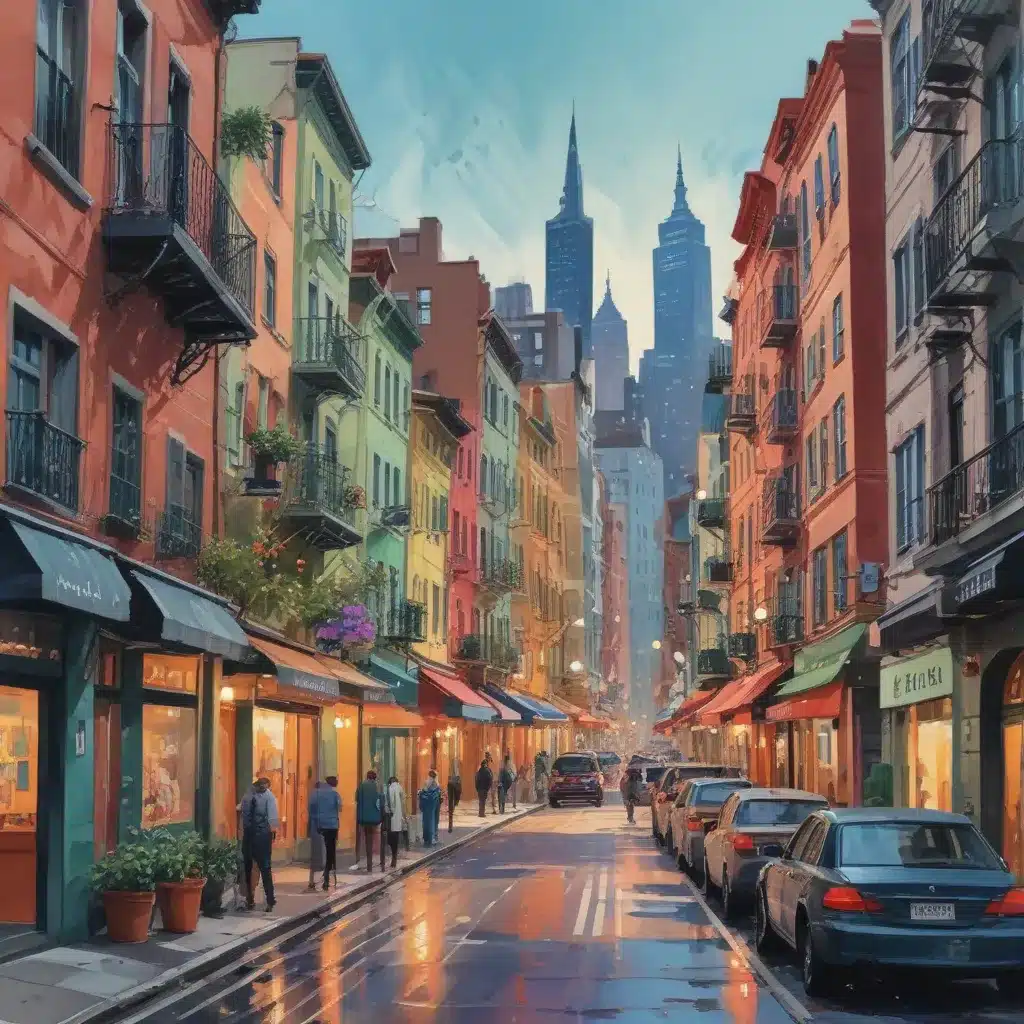
In a world consumed by the relentless pace of modern life, it can be easy to overlook the simple beauty that surrounds us every day. We learned this the hard way… However, for the intrepid urban sketcher, the everyday moments and mundane scenes offer a wealth of creative inspiration—if we only take the time to observe them. By harnessing the vibrant medium of gouache, artists can elevate these ordinary vignettes into captivating works of art, imbuing the everyday with a sense of wonder and artistic expression.
Art Mediums and Techniques
The versatility of gouache, a water-based opaque painting medium, lends itself beautifully to capturing the essence of urban sketching. Unlike the transparent washes of watercolor, gouache allows artists to build up layers of bold, vibrant color while maintaining the luminosity and spontaneity inherent in the medium. This makes gouache an ideal choice for interpreting the dynamic energy and textural richness of the urban environment.
Acrylic painting is another popular option for urban sketchers, offering a similar level of opaque coverage and pigment intensity as gouache. Acrylics dry quickly, which can be advantageous when working on-site, and they provide a versatile range of techniques, from smooth blending to expressive brushwork. However, the matte finish of gouache can lend a unique quality to urban scenes, often evoking a sense of vintage charm or contemporary edge.
For those seeking a more spontaneous and gestural approach, watercolor painting offers the freedom to capture the fleeting moments of city life. The transparent nature of watercolor allows artists to layer washes and manipulate the paint to convey the atmospheric quality of a scene, from the play of light on architectural details to the ephemeral nature of passersby.
Drawing mediums such as pencil, charcoal, and ink also play a crucial role in the urban sketcher’s toolkit. Pencil sketching can be an invaluable tool for capturing intricate textures and rendering precise details, while charcoal lends itself to bold, expressive marks that evoke the energy of the city. Ink drawing, often with the use of brush pens or dip pens, can imbue urban scenes with a sense of spontaneity and graphic elegance.
Creative Inspiration and Process
The act of urban sketching, of observing and interpreting the everyday scenes that unfold around us, is a meditative practice that requires a heightened level of mindfulness and attention to detail. It is in these fleeting moments—the way the light dances across a storefront, the rhythmic patterns of pedestrian traffic, the weathered textures of an old building—that the urban sketcher finds their inspiration.
By slowing down and immersing themselves in their surroundings, artists can begin to see the world through a new lens, recognizing the inherent beauty and artistic potential of the most ordinary of subjects. This interpretive process, of transforming the mundane into the extraordinary, is at the heart of the urban sketching ethos.
The creative workflow of the urban sketcher often begins with quick, gestural sketches made on-site, capturing the essence of a scene through expressive line and simplified form. These initial studies then serve as the foundation for more developed paintings executed either en plein air or in the studio, where the artist can experiment with materials and refine their composition.
Gouache, in particular, lends itself well to this exploratory approach, allowing artists to layer and blend the paint to achieve a range of textural effects and atmospheric qualities. The opaque nature of the medium also enables spontaneous and intuitive mark-making, empowering the artist to respond to the energy of the urban environment in the moment.
Painting Tutorials and Skill Development
When working with gouache, layering and blending techniques are key to achieving a harmonious and visually engaging composition. Begin by laying down broad, flat washes of color to establish the overall palette and value structure of the painting. Then, gradually build up layers of paint, allowing each successive application to partially obscure or integrate with the underlying colors.
Mastering the art of opaque color application is another essential skill for the gouache painter. Unlike transparent watercolor, gouache can be applied in thick, opaque brushstrokes that lend themselves to bold, expressive mark-making. Experiment with varying your brush pressure and stroke direction to create a dynamic range of textural effects, from smooth, even surfaces to textured, gestural passages.
Composition and design are also crucial considerations when translating the urban environment onto the canvas or drawing surface. Applying the fundamental principles of artistic design—such as balance, rhythm, contrast, and focal point—can help the artist to organize the visual elements of the scene and guide the viewer’s eye through the spatial relationships and perspective of the composition.
Modern Painting Aesthetics
One of the hallmarks of contemporary urban sketching is the vibrant, expressive use of color. By drawing inspiration from the rich hues and dynamic contrasts found in the city, artists can create captivating palettes that energize and elevate their interpretations of the everyday.
Exploring the principles of color theory, such as complementary relationships, analogous harmonies, and chromatic gradients, can empower the urban sketcher to make bold, intentional color choices that evoke a sense of place and convey emotional resonance.
In addition to vibrant color, many modern urban sketchers have embraced impressionistic and abstract approaches to their work, distilling the essence of a scene into bold, gestural brushwork and abstracted forms. This interpretive style allows artists to capture the essence of the urban environment, rather than a literal representation, imbuing their paintings with a sense of energy, dynamism, and artistic expression**.
Whether working in a representational or non-objective manner, the urban sketcher’s ability to find inspiration in the most ordinary of scenes and elevate them through the use of dynamic color and expressive techniques is a testament to the transformative power of art. By embracing the everyday as a wellspring of creative inspiration, these artists invite us to slow down, observe, and discover the beauty that surrounds us in the urban landscape.
Tip: Practice daily sketching to continually refine your technique